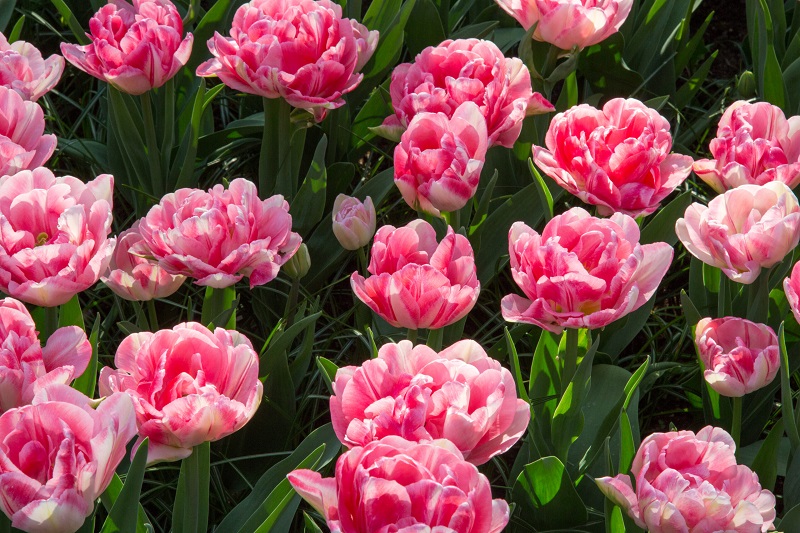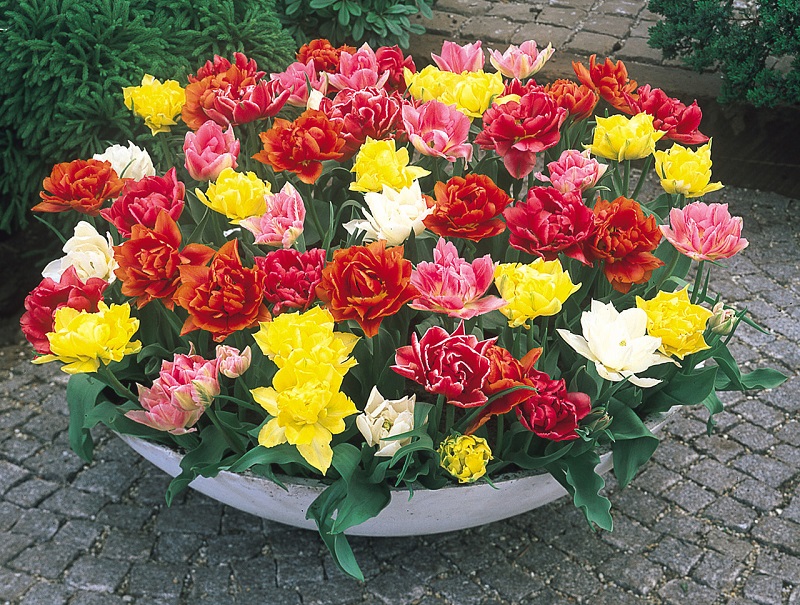Double Early Tulips are a beloved variety of tulips known for their lush, multi-layered blooms that resemble peonies. These early-blooming tulips offer a burst of color and elegance in spring gardens, making them a favorite among gardeners and floral enthusiasts. This comprehensive guide provides insights into the characteristics, growing conditions, and care requirements for Double Early Tulips. Whether you’re a seasoned gardener or new to tulips, this article will equip you with essential information to cultivate and appreciate these stunning flowers.
Historical Background
Origin and Development
Double Early Tulips emerged in the mid-20th century through hybridization efforts aimed at creating tulips with early blooming traits and a full, double-flowered form. By crossing Darwin Tulips with other early-blooming varieties, breeders achieved a blend of vibrant colors, robust growth, and appealing flower structure. This hybridization resulted in a tulip variety that quickly gained popularity for its beauty and versatility.

Breeding History
The breeding of Double Early Tulips involved selecting and crossing different tulip species to enhance traits such as bloom time, flower form, and plant height. The goal was to produce a tulip with early flowering capabilities and a compact growth habit, resulting in a flower that offers both aesthetic appeal and practical benefits in the garden.
Botanical Classification
Family and Genus
Double Early Tulips belong to the Liliaceae family and the Tulipa genus. They are part of a broader tulip family known for their diverse range of flower forms and colors. Within the Tulipa genus, Double Early Tulips are distinguished by their unique flower structure and early blooming nature.
Hybrids
As hybrids, Double Early Tulips inherit a combination of traits from their parent species, resulting in flowers with vibrant colors and a distinctive double-flowered appearance. This hybridization ensures that Double Early Tulips offer both beauty and resilience.
Characteristics of Double Early Tulips
Flower Structure
Double Early Tulips are renowned for their full, lush blooms with multiple layers of petals, creating a peony-like appearance. These tulips come in various colors, including red, pink, white, and yellow, with some featuring bi-colored patterns. Despite their compact size, their vibrant blooms make a significant impact in gardens and floral arrangements.
Plant Size and Growth
Typically, Double Early Tulips reach a height of 6 to 12 inches (15 to 30 cm). Their sturdy stems support the dense, double blooms, making them suitable for garden beds and containers. The foliage is green, lance-shaped, and emerges from the base of the plant, complementing the tulip’s overall appearance.
Growing Conditions for Double Early Tulips
Climate and Temperature
Double Early Tulips thrive in temperate climates with a cold winter period. They require temperatures ranging from 35°F to 65°F (1.7°C to 18°C) for optimal growth. A cold dormancy period is crucial for the bulbs to prepare for a vibrant spring display.
Soil Requirements
These tulips prefer well-draining soil, such as sandy loam or loamy soil, with a pH level between 6.0 and 7.0. Good drainage is essential to prevent waterlogging and bulb rot, ensuring healthy growth and blooming.
Light Requirements
Double Early Tulips need full to partial sunlight, ideally receiving at least 4 to 6 hours of sunlight daily. In warmer climates, providing some afternoon shade can protect the bulbs from excessive heat and extend their blooming period.
Watering
Regular watering is important for Double Early Tulips, but the soil should be allowed to dry slightly between waterings. Over-watering can lead to bulb rot, so proper drainage is crucial for maintaining healthy bulbs.
Planting Double Early Tulips
Timing
Plant Double Early Tulips in the fall, approximately 6 to 8 weeks before the first frost. This timing allows the bulbs to establish roots before winter, ensuring a robust and colorful display in spring.
Planting Procedure
- Depth: Plant bulbs 4 to 6 inches (10 to 15 cm) deep.
- Spacing: Space bulbs 4 to 6 inches (10 to 15 cm) apart.
- Soil Preparation: Enhance soil fertility and drainage by mixing in compost or well-rotted manure.
Care and Maintenance
Fertilization
Apply a balanced fertilizer, such as a 10-10-10 blend, at planting time and again in early spring. Follow the manufacturer’s instructions to avoid over-fertilizing, which can harm the plants.
Pruning and Deadheading
Remove spent flowers (deadheading) to encourage the plant to focus energy on bulb development rather than seed production. Allow the foliage to die back naturally to nourish the bulb for the next growing season.
Pest and Disease Management
- Pests: Common pests include aphids and spider mites. Use insecticidal soap or neem oil to treat infestations.
- Diseases: Monitor for fungal diseases like gray mold and root rot. Ensure proper spacing and drainage to minimize these issues.

Harvesting and Storing
Harvesting
Cut tulips when the buds are still tight but have begun to show color. Place them in water immediately to extend their vase life and enjoy their beauty indoors.
Storing Bulbs
After flowering, let the foliage die back naturally. Dig up the bulbs and store them in a cool, dry place until you are ready to replant them in the fall.
Propagation
Methods
- Division: Divide bulbs when they have multiplied, typically every 3 to 4 years.
- Seed Propagation: Less common, as growing tulips from seeds is more time-consuming and less predictable.
Timing and Conditions
Propagation is best carried out during the growing season. Ensure favorable conditions for rooting and bulb development to achieve the best results.
Notable Varieties and Hybrids
Some popular Double Early Tulip varieties include:
- ‘Foxtrot’: Known for its elegant, soft pink blooms.
- ‘Monte Carlo’: Features striking, golden-yellow flowers.
- ‘Abba’: Renowned for its vibrant, deep red petals.
Cultural and Aesthetic Significance
Symbolism
Double Early Tulips symbolize beauty, grace, and renewal. They are often associated with the arrival of spring and new beginnings, making them a popular choice for seasonal celebrations.
Use in Floral Arrangements
Due to their compact size and vibrant colors, Double Early Tulips are favored in floral arrangements for various occasions, including weddings, events, and seasonal decorations.
Conclusion
Double Early Tulips offer a stunning display of color and elegance, making them a valuable addition to any garden or floral arrangement. With their early bloom, unique double-flowered structure, and diverse color palette, they provide both aesthetic charm and practical benefits. By understanding their growing conditions, care requirements, and distinctive characteristics, you can successfully cultivate these beautiful flowers and enjoy their splendor each spring. Embrace the beauty of Double Early Tulips and enhance your garden with these exceptional blooms.
